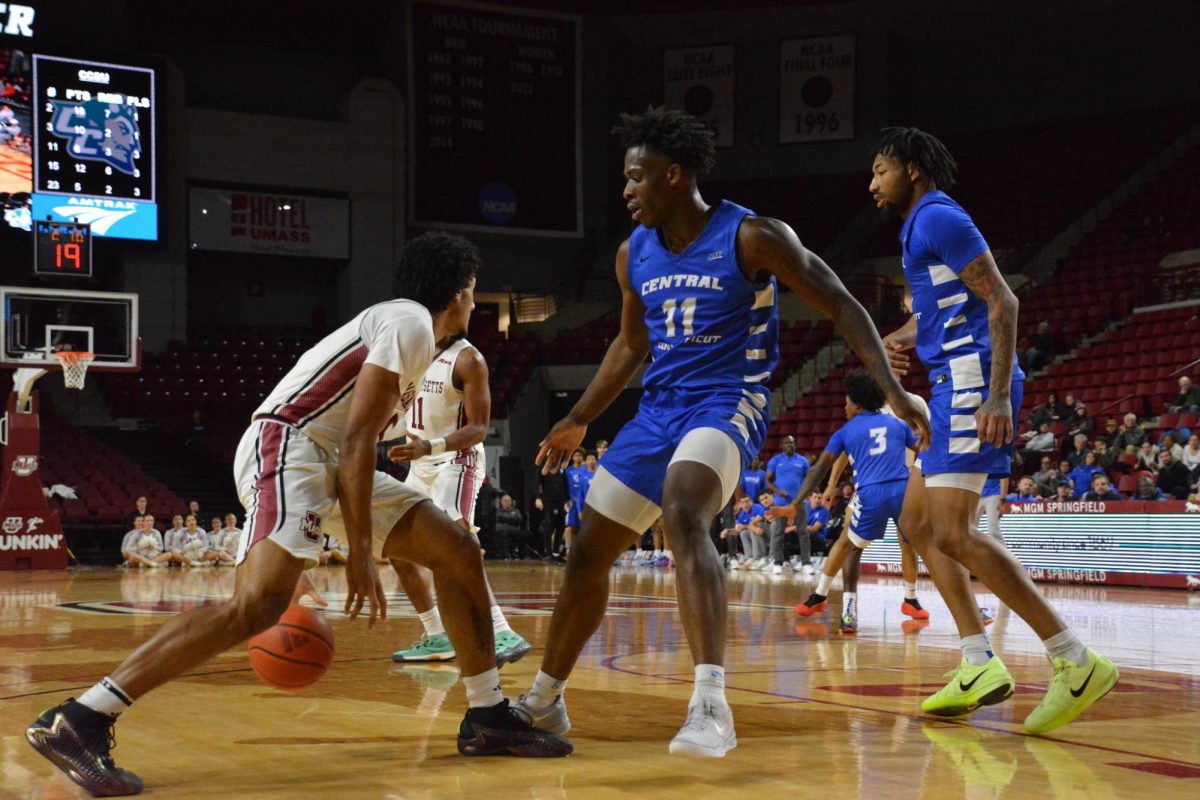If, as statistics state, one in three women will develop cancer at some point in their lives, then how do we take preventative measures?
Addressed to the audience of students and faculty in the campus center of the University of Massachusetts, this question was asked by the team of panelists who gathered on Oct. 20 for the open-panel discussion on women and their rates of developing a form of cancer.
The discussion, titled “Women and Cancer in Our Communities: How to Save Your Own Life,” was co-sponsored by the Women’s Health Project of the Center for Health Promotion, the Women of Color Leadership Network and the Everywoman’s Center for the purpose of educating women on their health and well-being while also raising awareness.
Opening the discussion, Wilmore Webley, assistant professor of microbiology at UMass, began by stating that approximately 12 million people in the U.S. have some prevalent form of cancer, and of those 12 million, 5.9 million are women.
The high rate for developing cancer, which according to Webley is just an umbrella term for about 250 diseases, derives mainly from the fact that people have longer life spans today than 100 years ago, when approximately 3 percent of deaths were cancer related.
“The greatest risk factor of developing cancer is age,” Webley said.
“Cancer cells are cells that are growing out of control, and that is why they are different from normal cells,” Webley added. “Probably 80 percent of cancers we have are metastasized. They have spread to other places from where they started. Most cancers would be treatable if they stayed where they started.”
“Women are burdened with a huge share of cancer,” Webley said. “Breast cancer is not the most fatal case. Lung cancer kills more women than any other.”
Webley stated the statistics form the National Cancer Institute, which reported that of the 219,000 estimated cases of lung cancer among men and women, 103,000 of those are women. Webley also stated that 12.7 percent of women who are born today will develop breast cancer, with only 5 to 10 percent of those cases hereditary.
Following Webley’s introduction, panelist Deborah Shields, executive director of the Massachusetts Breast Cancer Coalition, continued the discussion with a breakdown of the possible causes for cancer development, which included, among others, smoking, obesity, alcohol consumption and exposure to dangerous chemicals.
According to Shields, of the dangerous chemicals, 200 are found in everyday products such as children’s sip cups, nail polish, soap and in food products.
“There is never going to be one ‘smoking gun’ chemical that we can point to as the cause of breast cancer,” Shields said.
Shields emphasized the increasing developmental rates for breast cancer among women, with one in seven women being diagnosed in 2004 as opposed to the ratio of one in 20 in 1940. Massachusetts was the number one state in recorded incidents of breast cancer, but was ranked low in mortality rates. Although the rates of male breast cancer are increasing, they are not comparable to female rates.
When it came time in the discussion to talk treatment, Dr. Lindsey Rockwell, a medical oncologist and hematologist at Cooley Dickinson Hospital in Northampton, stressed what she deemed to be the two most important qualities one can have when dealing with cancer – awareness and fearlessness.
Rockwell, who stated that she regularly talks of cancer treatment everyday with 20 to 25 people with malignant forms of the disease, said that the only real form of cancer prevention is taking care of oneself by having the knowledge to face the issues head-on.
Rockwell said part of prevention is knowing what not to do – for example, women should be aware that consuming two to five alcoholic drinks per day can increase risk of cancer, as well as having a body mass index greater than 30 or lower than 22.
Fat, she said, contributes to estrogen levels, which in turn stimulates the growth of breast cancer. Though modest exercise four to five days per week can decrease the risk, she said over exercising can have the opposite effect because of the strain put on the body.
Aside from the various forms of cancer screenings and tests, another recommended source of prevention, Rockwell said, is vitamin D, which has shown to decrease the risk of breast, colon and aggressive prostate cancers.
The fourth panelist, Betsy Garson Neisner, executive director of the Cancer Connection center in Florence, Mass., offered a more personal account of her knowledge of the effects of cancer on women.
On coping with her diagnosis of ovarian cancer, Neisner said, “It’s a lesson on how to live with uncertainty. You don’t know how to control anything in life.”
From her account, Neisner added, “You develop something called ‘scansxiety,’ in that you’re about to have a scan and that is all that you can think about.”
Neisner said, “30 years ago, a woman would have been ushered into a doctor’s office. She would have been told she had cancer and the doctor would have told her what to do for treatment. She would have done it, and she would not have talked about it. It was frowned upon. Nowadays, doctors cannot dictate the treatment for patients. They can only explain the treatment. It is called informed consent, so the patient has to agree to everything.”
For Neisner, speaking as the daughter of a cancer survivor, who had suffered in relative silence, and as one herself, becoming involved with the Cancer Connection center had been a big part of what she described as coping mechanisms for the diseases by sharing her experiences with a community of others who could relate their own understanding.
“Most towns and cities don’t have something like this,” Neisner said. “Most towns and cities aspire to have something like this.”
Concluding the discussion, the panelists stressed the importance of moderation in decreasing the risks for developing cancer, and bewaring of the excesses which can cause cancer cells to accumulate over time.
“I always say to people that my job is to keep you out of the hospital, out of my office and in your life,” Rockwell said. “The less you see of me the better. Then I have done my job.”
Jennifer Heshion can be reached at [email protected]






